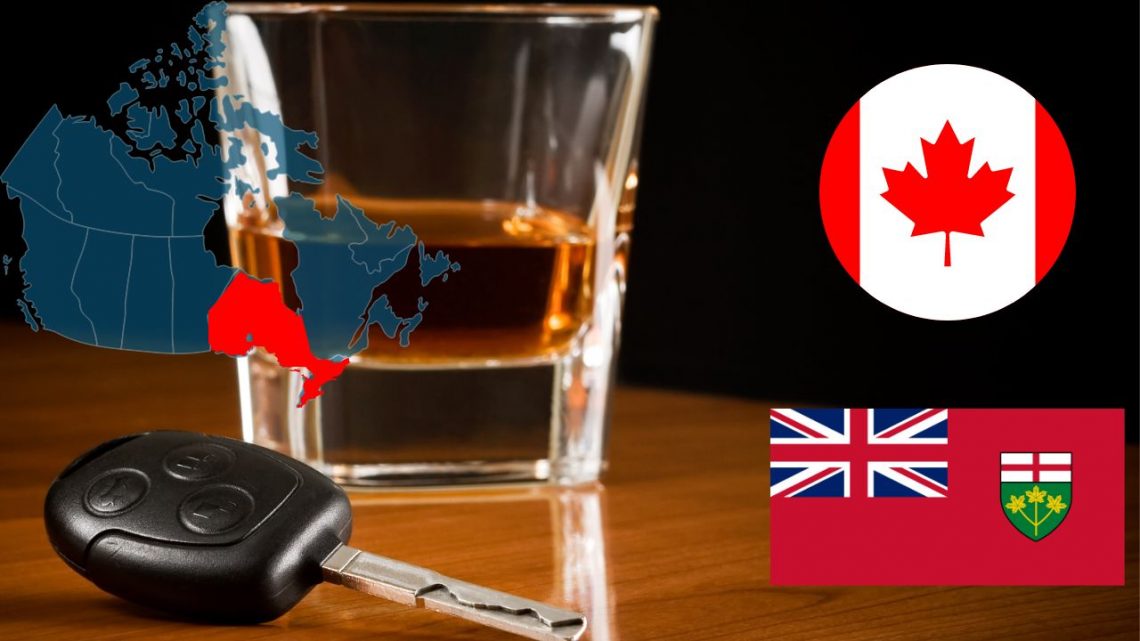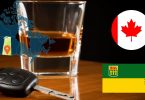Ontario’s permissible blood-alcohol concentration (BAC) is below 80 mg or 0.08% gram, equivalent to two to three bottles of beer.
Please keep in mind that this post’s primary goal is to provide information. We do not recommend drinking a particular amount of alcohol and driving. We strongly advise against driving while intoxicated in any way.
We strongly advise you to utilize a cab, Uber, or designated driving service even if you only consume the allowable amount of alcohol.
Visit the province’s official website to stay informed about drink-driving regulations.
What is the Legal Alcohol Limit for Driving in Ontario?
In Ontario, the legal alcohol limit for driving varies based on the type of driver’s license and the driver’s age. The province enforces strict regulations to ensure the safety of all road users. Below are the legal blood-alcohol concentration (BAC) limits for different categories of drivers:
- Regular Drivers: The legal BAC limit is 0.08%. Driving with a BAC at or above this level can result in legal penalties.
- Commercial Drivers: For those holding a commercial license, the legal limit is 0%. Operating commercial vehicles with any detectable amount of alcohol is prohibited.
- Minors (Under 21): It is illegal for drivers under the age of 21 to drive with any detectable amount of alcohol in their system, enforcing a zero tolerance policy.
Drink and Drive Penalties and Punishments in Ontario
In Ontario, the law takes driving under the influence of alcohol or drugs very seriously. The authorities employ various methods, including roadside drug screening equipment and sobriety tests, to detect impaired drivers. If you’re found driving while impaired, the consequences can be severe and vary based on several factors such as your age, license type, the level of alcohol or drugs in your system, and your previous offenses. It’s crucial for drivers to stay informed about these regulations and regularly check the official state website for updates.
Penalties for Exceeding Legal Alcohol Limits
- Warn Range Penalties (BAC between 0.05-0.079%)
- First Offense: 3-day license suspension, $250 penalty.
- Second Offense: 7-day license suspension, mandatory education or treatment program, $350 penalty.
- Third Offense: 30-day license suspension, mandatory education or treatment program, ignition interlock condition for six months, $450 penalty.
- Impairment Penalties (BAC of 0.08% or higher)
- First Offense: 90-day roadside suspension, 7-day vehicle impoundment, $550 penalty.
- Second Offense: Same as first, plus mandatory education and treatment program.
- Third Offense: Same as second, with ignition interlock condition for six months.
Additional Penalties for Criminal Impaired Driving Charges
- First Conviction: Minimum one-year license suspension, mandatory programs, and ignition interlock for one year.
- Subsequent Convictions: Increase in severity, including longer suspensions, mandatory programs, and medical evaluations.
Penalties for Young and Novice Drivers
Young and novice drivers with a BAC above 0% face immediate penalties, including roadside suspensions and fines, escalating with repeat offenses to include education programs and ignition interlock conditions.
Penalties for Commercial Vehicle Drivers
Commercial drivers must also adhere to a 0% BAC limit, with penalties mirroring those of young and novice drivers but tailored to the commercial driving context.
Note:
Ontario’s driving under the influence penalties are designed to deter impaired driving and ensure road safety. However, these laws are subject to change, and drivers are encouraged to frequently check the official state website for the most current information. This proactive approach can help drivers avoid serious legal consequences and contribute to safer roadways for everyone.
How Can I Calculate if My Alcohol Blood Limit is Legal in Ontario?
In Ontario, the police utilize various methods to determine if a driver is operating a vehicle under the influence of alcohol. These methods include breathalyzer tests, field sobriety tests, and blood tests, which are designed to accurately measure a driver’s blood alcohol concentration (BAC). These measures are taken very seriously to ensure the safety of all road users.
If you’re concerned about staying within the legal BAC limit in Ontario, there are a couple of ways to estimate your BAC level responsibly:
- Use a High-Quality Alcohol Breathalyzer: For those who want to ensure they’re driving safely, keeping a high-quality alcohol breathalyzer in your vehicle is a wise choice. Based on my decade of experience as a phlebologist, I recommend the BACtrack S80, widely available in Ontario. This device offers professional-grade accuracy and is DOT & NHTSA approved as well as FDA 510(k) cleared. It’s a reliable tool that can help Ontarians gauge their BAC level, providing a clearer understanding of their impairment level before deciding to drive.
- My BAC Calculator: Alongside other phlebologists and with the assistance of web developers, I’ve developed an online BAC calculator. This tool is designed to help you estimate your BAC level based on various factors including your weight, the type and amount of alcohol consumed, and the time elapsed since drinking. It’s a helpful resource for anyone looking to make informed decisions about their alcohol consumption in relation to driving.
Important Consideration
While both the BACtrack S80 breathalyzer and our online BAC calculator offer valuable insights into your potential impairment level, it’s crucial to remember that these methods cannot guarantee 100% accuracy. Factors such as metabolism, food intake, and individual health conditions can affect BAC readings. Therefore, these tools should be used as guidelines to assist in making safer driving decisions, not as definitive measures of your legal capacity to drive.
Using these tools can significantly reduce the risk of drunk driving by providing a clearer picture of your impairment level. However, if there’s any doubt about your ability to drive safely, the best decision is always not to drive. Remember, even if your BAC is under the legal limit, your driving abilities can still be impaired, and the consequences of impaired driving in Ontario are severe. Stay safe and make responsible choices to keep Ontario roads safe for everyone.
Ways to Avoid Driving with a High BAC in Ontario
Driving with a high Blood Alcohol Concentration (BAC) poses significant risks not only to the driver but also to other road users. In Ontario, there are several practical and safe alternatives to driving under the influence, ensuring you can enjoy your social events without putting anyone at risk. Here are some recommendations:
- Utilize Ridesharing and Taxi Services: One of the most convenient and immediate ways to avoid driving after consuming alcohol is to use ridesharing apps like Uber or Lyft. These services offer a safe and reliable option to get you home without the need to drive. For those who prefer traditional taxis, local companies such as Taxi Toronto in Toronto or City Cab Ottawa in Ottawa provide excellent services. These options are readily available and can be easily accessed through their respective apps or by phone, ensuring you have a safe ride home at any time.
- Order a Designated Driver Service: If you find yourself in a situation where you’ve driven to a location and then consumed alcohol, leaving your car behind might not be your preferred option. In such cases, designated driver services are a fantastic solution. These services provide a driver who will drive you and your car back home safely. Companies like Toronto Car Service in Toronto or Driverseat Ottawa in Ottawa specialize in such services. A simple Google search for “designated driver service” followed by your city name will provide you with options available in your area.
By choosing these alternatives, you contribute to safer roads in Ontario. Always remember that the risk of driving with a high BAC far outweighs the convenience of driving yourself home. Stay safe and make responsible choices.
Stick to Drink and Drive Laws in Ontario: Sad Statistics
Impaired driving significantly contributes to traffic fatalities, with Ontario recording one of the lowest rates of impaired driving incidents in Canada at 104 per 100,000 population. Despite these relatively low rates, there’s no room for complacency, as the province enforces strict impaired driving laws to maintain road safety.
To mitigate the risks of impaired driving, it’s advisable to either appoint a designated driver or opt for alternative transportation methods such as taxis, public transit, ride-hailing services, or calling a friend if you’ve consumed alcohol. If driving is unavoidable, ensure your blood alcohol content (BAC) remains within the legal limit, referring to the latest regulations on the official website and using a reliable breathalyzer to gauge your alcohol level accurately.








Leave a Comment
You must be logged in to post a comment.